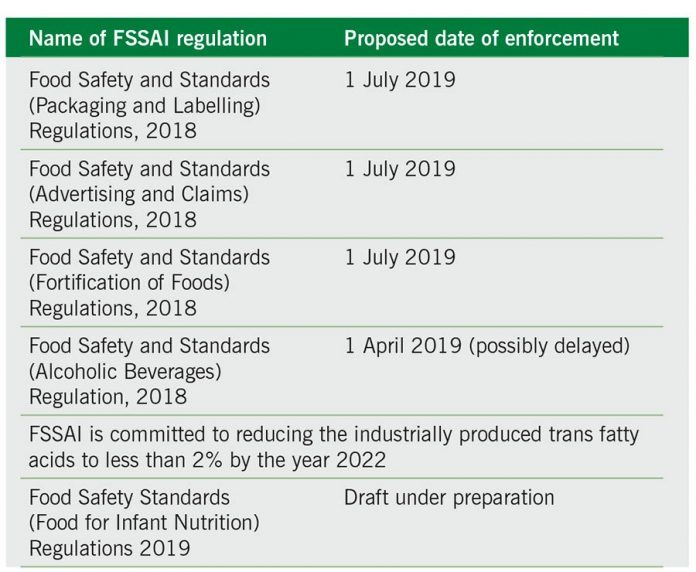The Indian food processing sector is the most unorganized one. With the changing scenario worldwide, Indians also felt the need to change the regulatory system for the food industry. In order to streamline the regulatory system in India, Parliament enacted the Food Safety and Standards Act 2006.
The actual implementation of regulations started from 5 August 2011, with the food safety and standards regulations 2011. FSSAI came into existence along with several regulations such as food products standards and additives regulations; advertising and claims regulations; contaminants, toxins and residues regulations; food packaging and labelling regulations; and alcoholic beverages regulations. Over time and with industry and citizen inputs, lacunae in the regulations were corrected. This has brought a few more regulations into existence in the last 2-3 years.
A healthy diet is one of the key responses to the rising incidence of noncommunicable diseases. Both supply and demand-side interventions are needed to ensure that citizens have access to and eat healthy food. FSSAI has initiated a series of actions in this regard.
As we all know, ‘food labelling’ serves as a primary link of communication between the manufacturer and consumer and covers both food safety and information of consumer interest. To make the national labelling regulations more robust and effective, FSSAI is in the process of a comprehensive revision of the food safety and standards packaging and labelling regulations 2011, with the objective of having three different regulations dealing separately with packaging, labelling and advertisement and claims. In this series, two regulations namely packaging regulations and advertising and claims regulations have been finalized and notified in the year 2018 to be enforced from 1 July 2019.
However, FSSAI’s new labelling and display regulations are ready for draft notification. As per the draft, packaged food companies will need to declare nutritional information such as calories, saturated fat, trans-fat, added sugar and sodium per serving on the front of the pack. The food labels will also declare per serve percentage contribution to recommended dietary allowance on the front of the pack. These regulations propose to make it mandatory to display red color-coding on front-of-the-pack labels of packaged food products that have high fat, high sugar and high salt content levels. This requirement would be implemented in a phased manner for a period of three years.
In addition to this, the new labelling and display regulations propose that date marking including date of manufacturing and date of expiry must be at one place in order to be noticed. The new regulations prescribe the provision for labelling of food allergen and also allow to use of standardized precautionary and safety symbols.
Other key features of these regulations include the use of vegetarian or non-vegetarian food logos; nutritional information in the form of barcode and or a global trade identification number (GTIN); the new logo for vegetarian food which consists of a green color filled triangle inside a square with green outline to enable access by color blind people. Packaging of food material which is not meant for human consumption shall bear an [X] symbol so as to clearly distinguish the non-food grade items from food items. An internal mechanism to address the problem arising out of implementation and or interpretation of the regulations is also part of the new draft regulation.
Whereas, the food industry has expressed concerns over the proposed changes. Subodh Jindal, president of All India Food Processors’ Association, is quoted by the financial press: “These regulations are neither scientific nor practical enough to be implemented.” He suggested, “The authority should instead focus on awareness of consumer about balanced diet and suitability of different foods as per one’s lifestyle.”
The Gazette of India on 25 June mentions that inputs by concerned associations and the food industry regarding the food labelling and display regulations should be submitted in 30 days (25 July 2019). “The date of enforcement for these regulations was set for 1 July 2019, but seeing the issues raised by food associations and industry, there could be a further delay in enforcement,” said an FSSAI source in response to our query on the date of enforcement of these regulations.
FSSAI has invited suggestions and objections from stakeholders within 30 days from the publication of the draft regulations. Several main issues raised by the industry association particularly with front-of-the-pack labelling would also be considered at the time of finalization of these regulations.











